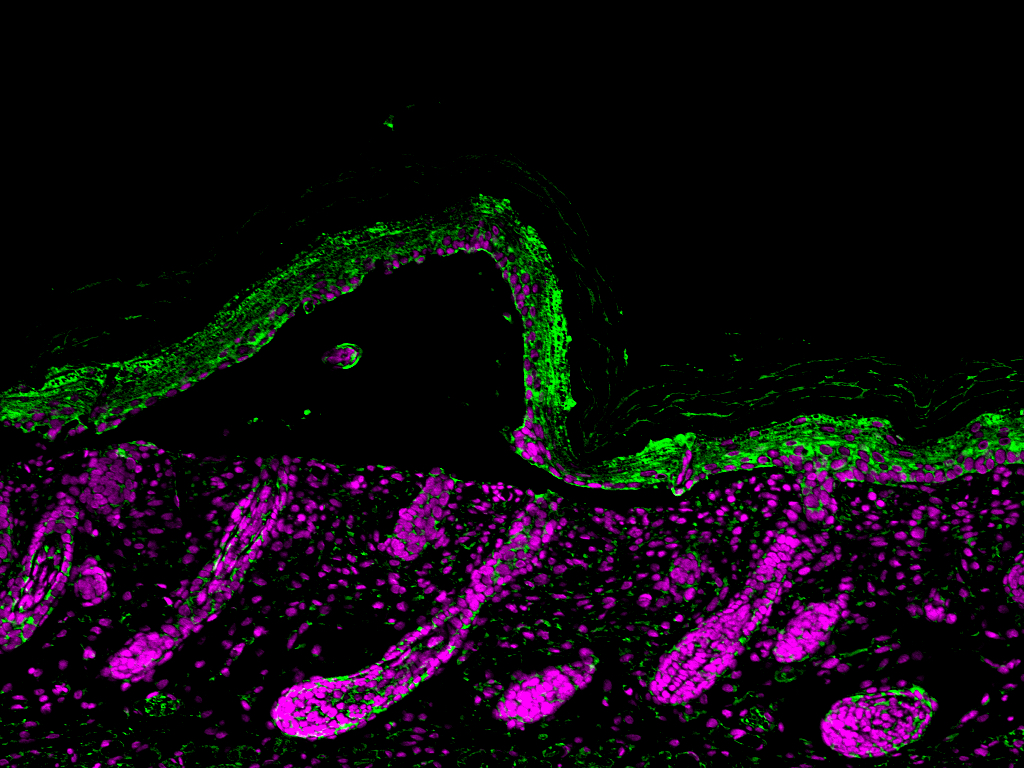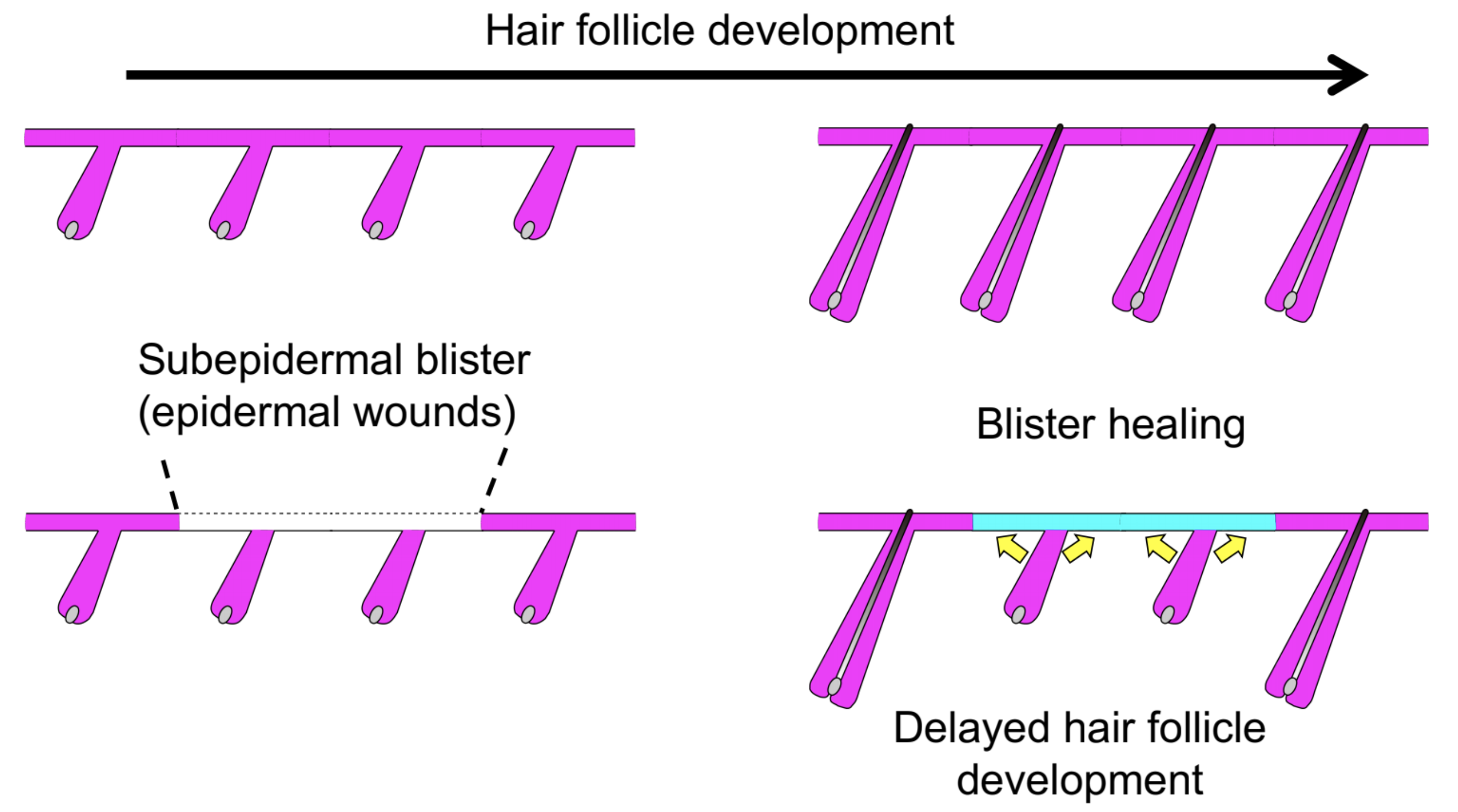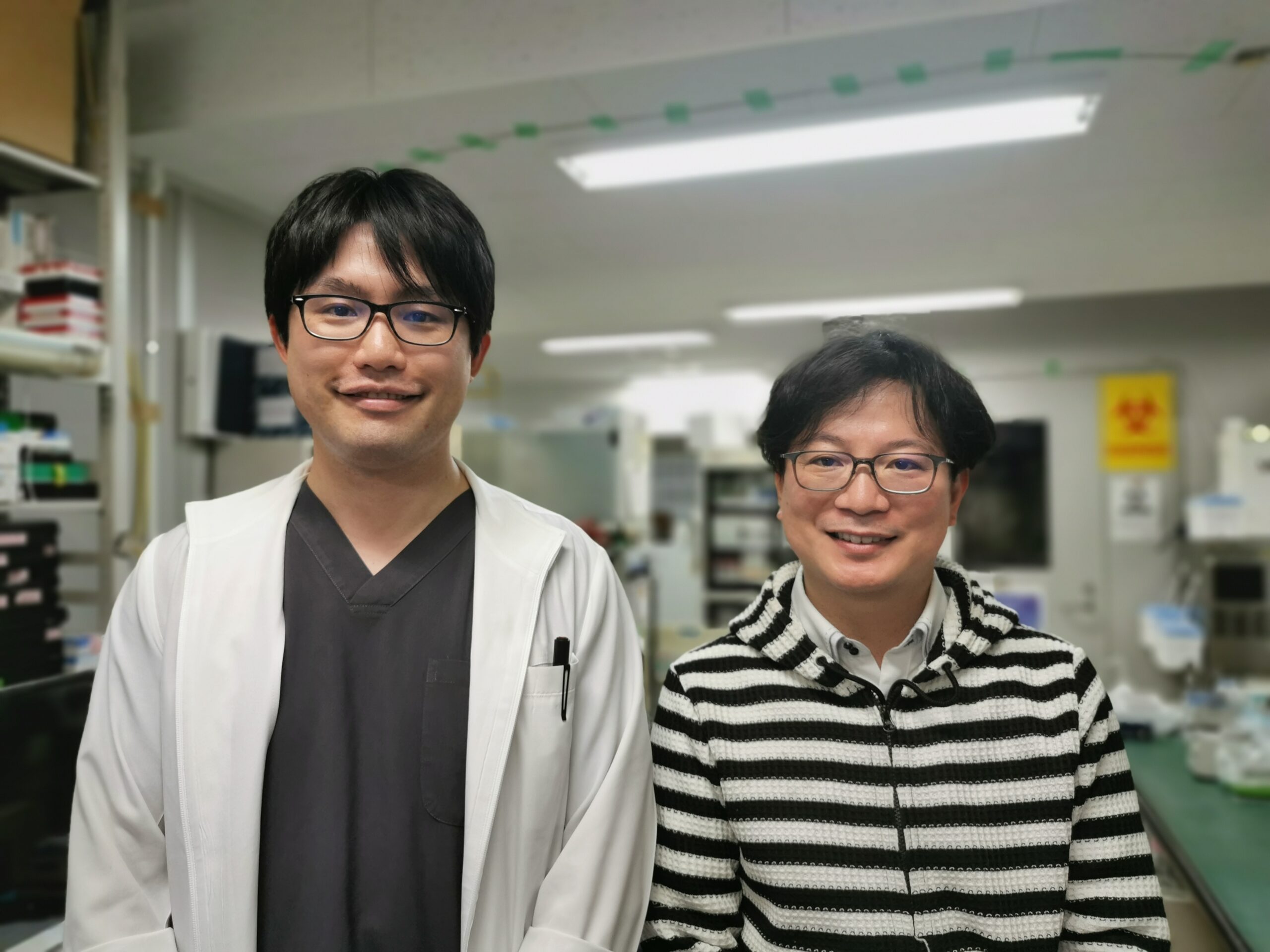Hair follicles heal blisters at personal cost
Research Press Release | June 14, 2021
A team of scientists has shown that the healing of skin blisters is driven by hair follicle stem cells, which delay their own development in the process.

A fluorescent micrograph of a cross-section through an epidermal blister on mice skin. The epidermis (green) is detached from the other layers (magenta) of skin tissue (Yu Fujimura, et al. EMBO Reports. June 4, 2021).
The healing process of the tissues in the human body is particularly well-studied in skin, especially as skin serves as a layer of protection from the environment. However, there remain some specific types of skin injuries where the healing process is not well understood.
A team of scientists from Japan and Italy, including Associate Professor Ken Natsuga from the Graduate School of Medicine at Hokkaido University, have used models of skin blisters to explore the effects of injury on developing skin tissue. Their discoveries were published in the journal EMBO Reports.
The scientists performed their tests on mice which had artificially generated epidermal detachment, or skin blisters. They investigated the healing process by monitoring gene expressions and cell proliferation, tracing cell lineages, and employing mathematical models.
The team found that a type of stem cells (SCs), hair follicle stem cells (HFSCs), play an outsize role in blister healing. The HFSCs are mainly responsible for the healing of subepidermal blisters, from the base of the wound. The wound-healing activity of HFSCs is accompanied by delayed growth of hair follicles in the regenerated skin tissue. When HFSCs are reduced, another group of SCs, the interfollicular epidermal stem cells (IFESCs), can also contribute to healing, but only from the blister margins. They also confirmed that blister healing was affected by the shapes of keratinocytes, the primary skin cells, although the mechanism by which the shapes affect healing is still unclear.

Hair follicle stem cells contribute to blister healing. In uninjured skin, the follicles give rise to hair. When the skin blisters, the hair follicles contribute to healing at the cost of delaying their growth (Yu Fujimura, et al. EMBO Reports. June 4, 2021).
The findings have revealed the balance between wound healing and development in skin, indicating many possibilities for the treatment of skin blistering in humans. The models used in this study may themselves be used for the development of new therapies for blister healing. The role of sweat glands could not be investigated, as mice lack sweat glands, and the role of mesenchymal cells, which have previously been shown to be involved in healing of skin wounds, was not examined. Future work will focus on these aspects.
“Our findings of the healing processes pave the way for tailored therapeutic interventions for epidermolysis bullosa, pemphigoid diseases and other blistering diseases,” says Ken Natsuga.
The paper is dedicated to the late Professor Hiroshi Shimizu, a co-author of the paper, who passed away while the paper was in review.

Yu Fujimura (left), first author of the study, with corresponding author Ken Natsuga (right; photo: Ken Natsuga).
Original Article:
Yu Fujimura, et al. Hair follicle stem cell progeny heal blisters while pausing skin development. EMBO Reports. June 4, 2021.
DOI: 10.15252/embr.202050882
Funding:
This work was funded by Japan Agency for Medical Research and Development (AMED; 20ek0109380h0003), Japan Society for the Promotion of Science (JSPS) KAKENHI (17K16317, 16K10120), the Uehara Foundation, the Lydia O’Leary Memorial Pias Dermatological Foundation, the Japan Science and Technology Agency (JST) Core Research for Evolutional Science and Technology (CREST; JPMJCR15D2), the Fondazione Umberto Veronesi, and the Italian Association for Cancer Research (AIRC; IG20240, MFAG2018-21640).
Contacts:
Associate Professor Ken Natsuga
Department of Dermatology
Faculty of Medicine; Graduate School of Medicine
Hokkaido University Faculty of Medicine and Graduate School of Medicine
Tel: +81-11-706-7387
Email: natsuga[at]med.hokudai.ac.jp
Sohail Keegan Pinto (International Public Relations Specialist)
Public Relations Division
Hokkaido University
Tel: +81-11-706-2185
Skype: hokudai.pr1
Email: en-press[at]general.hokudai.ac.jp
Related Press Releases:
Collagen controlling the thickness and juvenile state of skin
